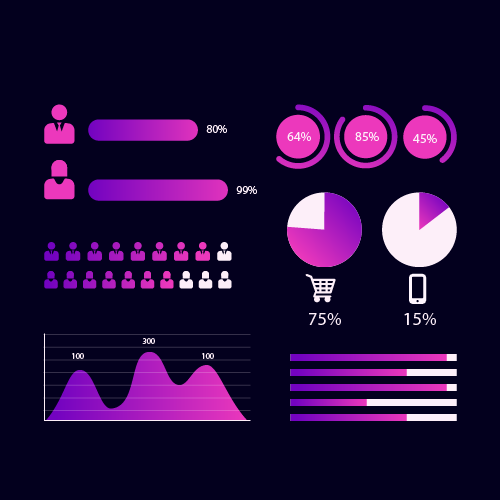Launching a Minimum Viable Product (MVP) is a pivotal moment for any startup or new product development. It marks the transition from ideation to validation, where you finally get to test your assumptions and gather real-world user feedback. However, simply launching an MVP is not enough. You need to actively measure its success to understand its performance and make data-driven decisions for future iterations. But how do you define "success" for an MVP, and what metrics should you track?
This article will delve into key metrics to monitor and analyze the effectiveness of your MVP, allowing you to refine your product and maximize its potential.
1. User Engagement Metrics:
Understanding how users interact with your MVP is crucial. Track metrics like:
-
Active Users: Daily or monthly active users indicate the level of engagement and adoption.
-
Session Duration: How long users spend on your platform reveals their level of interest and the value they derive from it.
-
Retention Rate: The percentage of users returning to your MVP demonstrates its ability to retain its audience.
-
Number of Sign-Ups/Downloads: This metric gauges initial interest and adoption rate.

2. Conversion Metrics:
These metrics measure how effectively your MVP converts users into paying customers or desired actions. Track metrics like:
-
Conversion Rate: Percentage of users completing a desired action, such as signing up for a trial or making a purchase.
-
Customer Acquisition Cost (CAC): The cost of acquiring a new customer helps assess the efficiency of your marketing efforts.
-
Customer Lifetime Value (CLTV): The projected revenue a customer generates during their engagement with your product.

3. User Feedback and Satisfaction:
Direct feedback from users provides invaluable insights into their experience and pain points. Implement mechanisms to collect feedback like:
-
Surveys: Conduct surveys to understand user satisfaction and identify areas for improvement.
-
Net Promoter Score (NPS): Measures user willingness to recommend your product to others, reflecting overall satisfaction.
-
In-app Feedback Tools: Allow users to provide feedback directly within the app for immediate insights.
-
Social Media Monitoring: Track mentions and discussions about your MVP on social media platforms.

4. Performance and Technical Metrics:
Monitoring the technical performance of your MVP is essential to ensure a smooth user experience. Track metrics like:
-
App/Website Load Time: Slow loading times can lead to user frustration and abandonment.
-
Error Rates: Monitor errors and crashes to identify and resolve technical issues promptly.
-
Uptime and Availability: Ensure your MVP is consistently accessible to users.

5. Financial Metrics (if applicable):
If your MVP involves revenue generation, monitor key financial indicators like:
-
Monthly Recurring Revenue (MRR): Predictable revenue generated from subscriptions or recurring payments.
-
Average Revenue per User (ARPU): Measures the average revenue generated per user.
-
Return on Investment (ROI): Evaluates the financial return on your MVP development investment.

Remember:
-
Focus on the most relevant metrics: Choose metrics that align with your MVP goals and target audience.
-
Track progress over time: Observe trends and patterns to understand the impact of your development efforts.
-
Be prepared to adapt: Use data-driven insights to refine your product and iterate based on user feedback.
-
Don't be afraid to pivot: If your MVP isn't meeting expectations, be willing to adapt your strategy or even pivot to a new direction.
By actively measuring and analyzing these key metrics, you gain valuable insights into the performance of your MVP, allowing you to make informed decisions that drive its success and pave the way for future growth.
